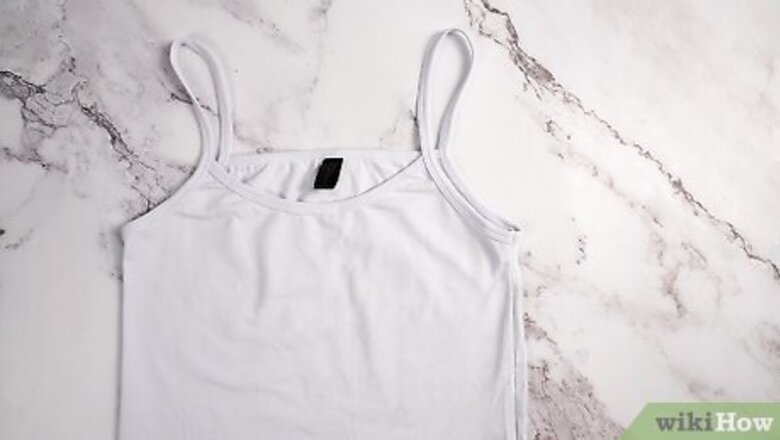
views
Preparing the Fabric and Dye
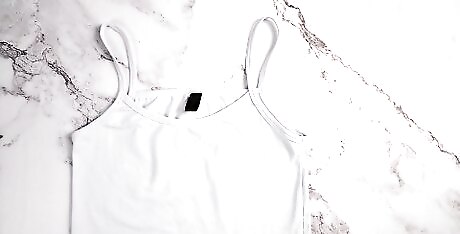
Choose your fabric. Plain, white fabric will work the best for this. Dye is translucent, so the original color of the fabric will show through the dye. Fabric made from natural fibers will work the best. This method will create a simple band of color across the bottom of your fabric. How thick this band is depends on how deep you dip the fabric into the dye.

Wash the fabric, but do not dry it. Use a temperature setting suitable for the fabric you are using, and omit the fabric softener. Squeeze out the excess water (do not wring) until the fabric is still wet, but no longer dripping. Pre-washing the fabric is important, as it will remove any coatings that might prevent the dye from soaking in.

Protect yourself and your workspace. Cover your work area with several sheets of newspaper, a trash bag, or a cheap, plastic tablecloth. Put on an old set of clothes you don't mind staining. Lastly, put on a pair of rubber gloves. Keep a window open or turn on a fan to ensure good ventilation. Dye can get pungent.
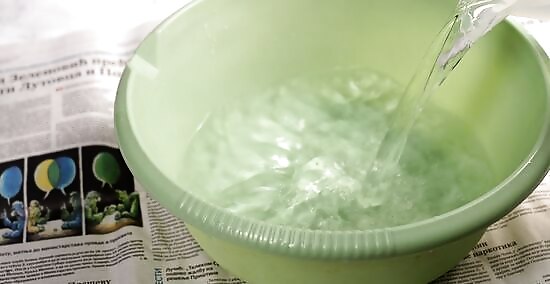
Pour hot water in a large, plastic container. A tub, bin, or bucket will all work just fine. Keep in mind that the dye will stain the plastic, so make sure it's not something you care about. Heat the water up to about 140°F (60°C) first, then pour it into the container. You will need about 2 gallons (7.5 liters) of water for every pound (453.5 grams) of fabric.
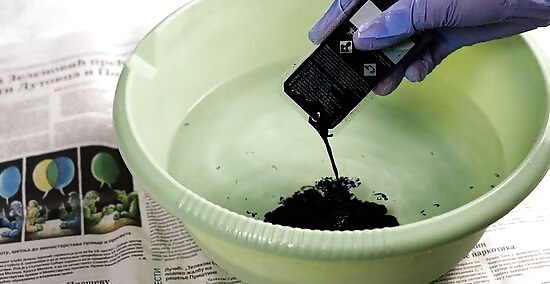
Stir the dye into the water. You can use either liquid dye or powder dye. How much you use depends on how much fabric you are dyeing and how dark you want the color to be. In general, plan on using ½ cup (120 milliliters) of liquid dye or 1 box of powder dye for each pound (453.5 grams) of fabric. Use twice the amount of dye if you want the color to be darker or deeper. If you are using bottled dye, shake the bottle first to mix the pigments inside.
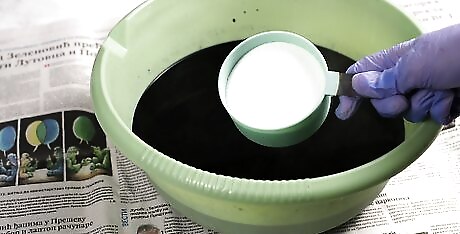
Add some salt or vinegar, if needed. Each brand of dye is different, so you may not need to add either of these. Salt or vinegar is usually added to the dye bath to help the dye adhere better to the fabric. It would be a good idea to read the label on your bottle or box of dye first, however, as not all dyes require this. In general, you would: Add 1 cup (300 grams) of salt if the fabric is cotton, linen, or rayon. Add 1 cup (240 milliliters) of white vinegar if the fabric is nylon or silk.
Dip Dyeing the Fabric
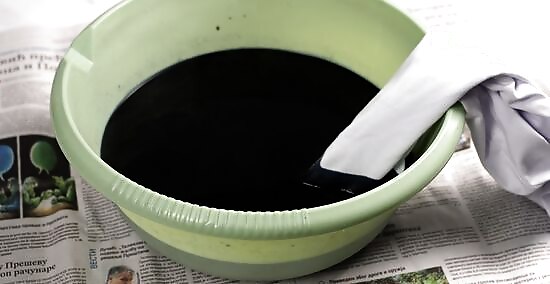
Dip the fabric into the dye. How far you dip it in depends on how thick you want the colored band to be. The deeper you dip the fabric into the dye, the thicker the band will be. If you want to, you can use a pin to mark where you want the dye to end. Dip the fabric into the dye just below the pin; the dye creep up the fabric as it dyes.
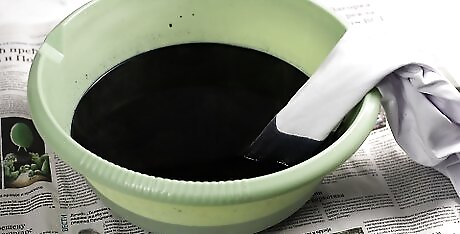
Leave the fabric in the dye if you want a striped or banded effect. Drape the fabric over the side of the dye bath; make sure that the part you want dyed is in the dye. Leave the fabric in the dye for 15 minutes, or until you get the color you want. Keep in mind that the fabric will dry a few shades lighter. This will create a stark line between the dyed part and the un-dyed part. Clip the fabric to the edge of the dye bath with clothespins so that it doesn't slide down.
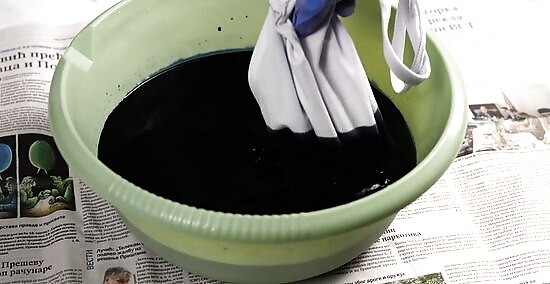
Move the fabric up and down if you want a slight gradient effect. Dip the fabric into the dye however deep you want. Gently bob it up and down in the dye until you get the color your want, then drape the fabric over the edge of the container. Leave it there for about 15 minutes so that the dye can soak in. This will create a softer line between the dyed part and the un-dyed part. It's not quite an ombre, but it's not stark or harsh. Placing a pin where you want the dyed part to end will help you know how far to dip the fabric each time you bob it.
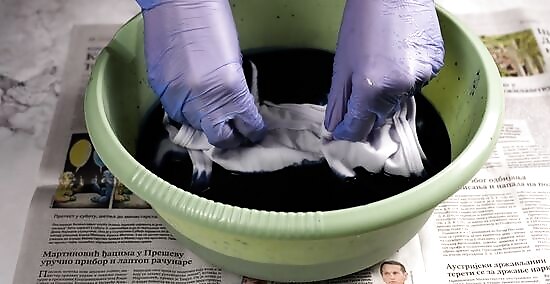
Gradually pull the fabric out if you want a larger gradient effect. Leave the fabric in the dye for 1 minute, then pull it out one-third of the way. Leave it there for 2 to 3 minutes, then pull it out by another third. Wait 5 to 6 minutes, then pull it out the rest of the way.
Rinsing and Washing the Fabric
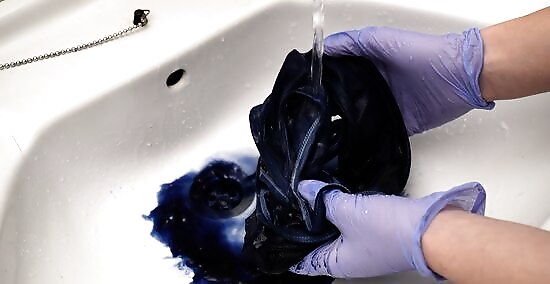
Rinse the fabric with cool water. Hold it by the un-dyed part so that the water runs towards the dyed part. This will prevent the dye from getting onto the un-dyed part of the fabric.
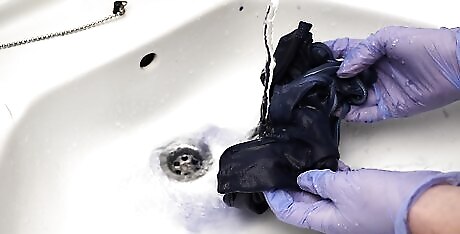
Rinse the fabric with warm water to set the dye. Again, keep the un-dyed portion on top to avoid staining it. Keep rinsing the fabric until the water runs clear.

Wash the fabric in the washing machine. Use a cold water setting and a gentle detergent. You can also hand wash the fabric instead, if you prefer.
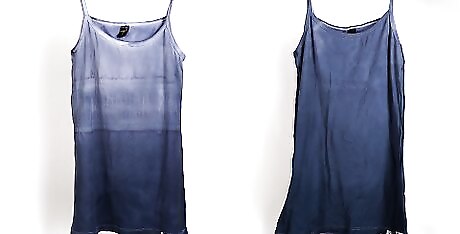
Allow the fabric to dry. You can hang the fabric up to dry, or you can toss it into the dryer. Once the fabric is dry, you can use it for your project. Remember to wash the fabric in cold water whenever you launder it, or the dye may fade.




















Comments
0 comment